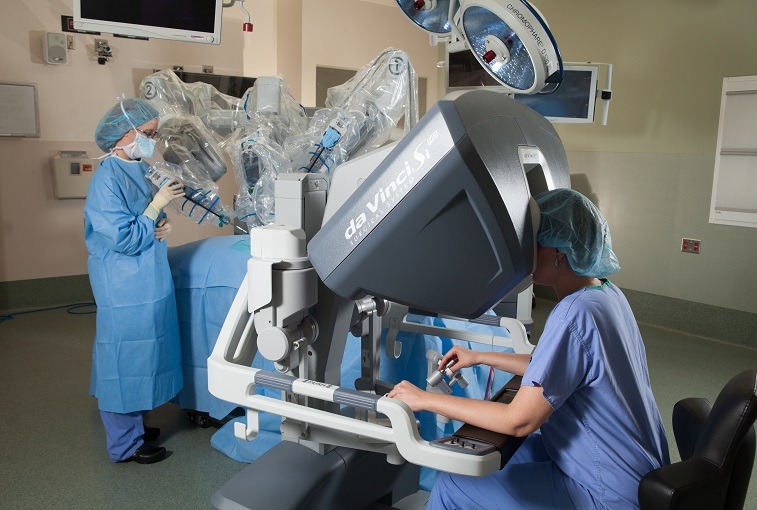About 20 years ago, robotic surgical machines became commercially available. Since then, surgeons have implemented the tool into a wide range of surgeries.
For James Clay, M.D., a general surgeon at Sanford Health, the uses are vast.
What is robotic surgery?
Robotic surgery is a type of minimally invasive surgery that uses physician-controlled, computer-enhanced robotic system to operate on a patient through small incisions. After placing the instruments within the patient, the surgeon sits at an adjacent control console. The console allows the surgeon a 3D view of the working space, magnified and enhanced. From the console, the surgeon controls the movements of the robotic arms and instruments that work on the patient.
One misconception Dr. Clay hears from patients is they believe the robot is in control of the surgery.
“I reassure them that I’m doing the procedure. I’m there in the room doing the procedure, and I’m the one actively controlling it,” he said. “What I commonly tell patients is that the robot is an instrument that I use. It’s a tool to enhance visualization and precision.”
Benefits of robotic surgery
Not every surgery will be eligible for a robotic surgery. But for those that are, it can offer many benefits.
“I think if their procedure is amenable to robotic surgery, they (the patient) should consider it, as it may decrease recovery time and the amount of pain,” said Dr. Clay. “But it’s really a case-by-case basis, and the surgeon needs to have a conversation to discuss risks and benefits of any proposed surgery.”
Along with the potential for less pain and faster recovery, benefits to the patient include less bleeding and a shorter hospital stay.
The robot’s abilities also offer benefits for surgeons.
“The robotic system has many benefits over conventional laparoscopy for the surgeon, which I feel also benefit the patient. There is superior visualization, increased range of motion and ergonomically, it is far superior,” said Dr. Clay.
Widespread use
Robotic surgery has become a standard procedural technique nowadays, and at Sanford Health, many of its major medical centers offer robotic surgery options.
“Pretty much any abdominal surgery is amenable to robotics, but specifically what we do here (at Sanford Bemidji) is upper gastrointestinal surgery, gallbladder surgery, hernia repair, and colon surgery,” said Dr. Clay.
Evolving medicine
As health care continues to evolve, robotic surgery will advance along with it.
“The robot just gives us a tool to do procedures more precisely and with a minimally invasive approach,” said Dr. Clay. “Techniques continue to evolve, and as more and more surgeons are using the robot and sharing their experience, we’re refining our techniques, becoming better at what we do and having better outcomes for patients.”
More stories
…
Posted In Bemidji, Digestive Health, General Surgery
